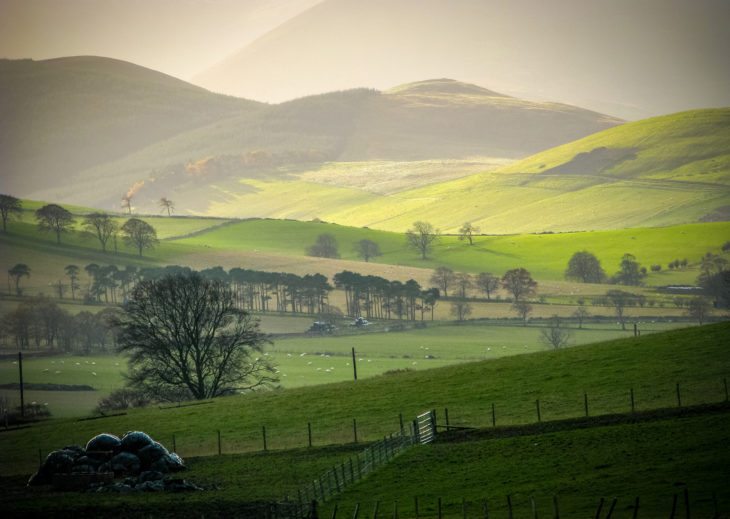The Trust has published a new blueprint for rural payments after Brexit.

Our Land Stewardship Policy is a blueprint for government policy. It shows how land management should be supported in Scotland after the UK leaves the Common Agricultural Policy (CAP) in a way that safeguards wildlife and provides a high-quality natural environment, while also supporting the rural economy.
The blueprint outlines a number of solutions for safeguarding and enhancing the natural capital value of land in Scotland, and shows how these measures could be paid for within the Scottish Government’s current spending plans.
Our Chief Executive Jonny Hughes said: “The Common Agricultural Policy has been one of the biggest forces shaping Scotland’s environment and economy over the past four decades.
“After Brexit the Scottish Government is likely to be in charge of how, and how much, public money is spent. With finances under increasing pressure we need a new system that clearly links public money with public benefit to ensure that there is continued support for the rural economy
“A land stewardship approach involves living within our means, aiming to getting the best from our land while ensuring it is sustainably managed. Adopting this approach would allow us to create a healthier countryside, where producing quality food and other commodities from a quality environment becomes the new cultural norm.
“The consultation on our draft blueprint for government policy earlier this year stimulated a lot of constructive discussion and I’d like to thank everyone who contributed to shaping our thinking. We look forward to continuing these conversations in the years ahead.”
Anne Gray, Senior Policy Officer, Scottish Land & Estates said: “For the majority of Scottish Land & Estates’ members, land stewardship is at the heart of their approach to land use decision making. As an organisation we are committed to supporting land ownership and management which is modern, forward-thinking and relevant to the needs of today.
“While we do not sign up to all of the proposals within the Scottish Wildlife Trust’s blueprint, we can all agree that it is vital that we enable and support the restoration, maintenance and enhancement of Scotland’s natural assets for the long-term.
“Without these we would not have the basis for a land-based economy, rural tourism, thriving rural communities or a good quality of life. We look forward to continuing to work with the Scottish Wildlife Trust and others to find ways in which this aspiration can be realised.”
Christopher Nicholson, Chairman, Scottish Tenant Farmers Association Chairman said: “Whatever the outcome of Brexit, within a couple of years Scotland will need to have a new agricultural policy ready to replace the CAP, and the Scottish Wildlife Trust have made a good start with this Land Stewardship Policy. Farmers may not agree with all of it, but the key principles set out should help support sustainable and resilient farming businesses and present a strong case to maintain agricultural support payments.
“At the core is the need for farms to provide additional public goods such as wildlife habitats to defend the budget for farm support, much of which can be incorporated by farm businesses without compromising agricultural output. Some measures, including the protection and enhancement of soil productivity are win-wins for both farming and the environment. The policy provides a blueprint for stakeholders to consider, and is clear that in developing the proposals close consultation will be required with the farming industry.”
The blueprint for government policy establishes a new system of support for farming with three tiers of payments designed to maintain, enhance and restore natural capital, underpinned by regulations that support these measures.
It also calls for a target to create one million hectares of new native woodland by 2050, bringing Scotland’s total woodland cover to 30 per cent, and prioritises grant support for creating new native woodland through planting and natural regeneration.
Better stewardship of wild deer includes targets for deer management being agreed with Scottish Natural Heritage and carried out in a way that reduces impacts and improves the condition of habitats. Grouse moors should be licenced and there should be tighter controls on the burning of moorland vegetation (muirburn), to limit this practice to grouse moors, and prevent burning of sensitive habitats including peatlands.
A number of dedicated funds should be established to support a range of activities including the Scottish Government’s target of restoring 300,000 hectares of peatland by 2032, work to improve the condition of lochs and rivers and implement natural flood management, control and eradication of invasive non-native species, and the creation of a National Ecological Network.
